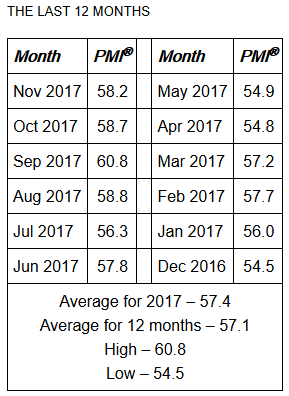The U.S. Commerce Department this morning
released its
Housing Starts report for November 2017:
---------------------------------------------------
Housing Starts:
Predicted: 1,240,000
Actual: 1,297,000
Change From Previous Month:
+3.3%
Change From One Year Previous:
+12.9%
---------------------------------------------------
Building Permits:
Predicted: 1,270,000
Actual: 1,298,000
Change From Previous Month
: -1.4%
Change From One Year Previous
: +3.4%
----------------------------------------------------
Housing Starts: The top, yellow-highlighted figure is a measure of initial construction of single and multi-family residential units in the United States for the indicated month. Seasonally adjusted annual rate. The "predicted" figure is what economists were expecting, while the "actual" is the true or real figure.
If you're wondering about the demand for new homes in the United States,or about the American construction industry in general, then you should pay attention to the monthly Housing Starts report. This report also offers insight into specific types of consumer spending: when housing starts are up, demand for the stuff that a consumer would purchase for a new home (large appliances, consumer electronics, furniture, etc.) tends to also rise -- and vice versa.
Click here to view the full Commerce Department report (PDF).
Labels: building_permits, hard_data, housing, housing_starts, real_estate








